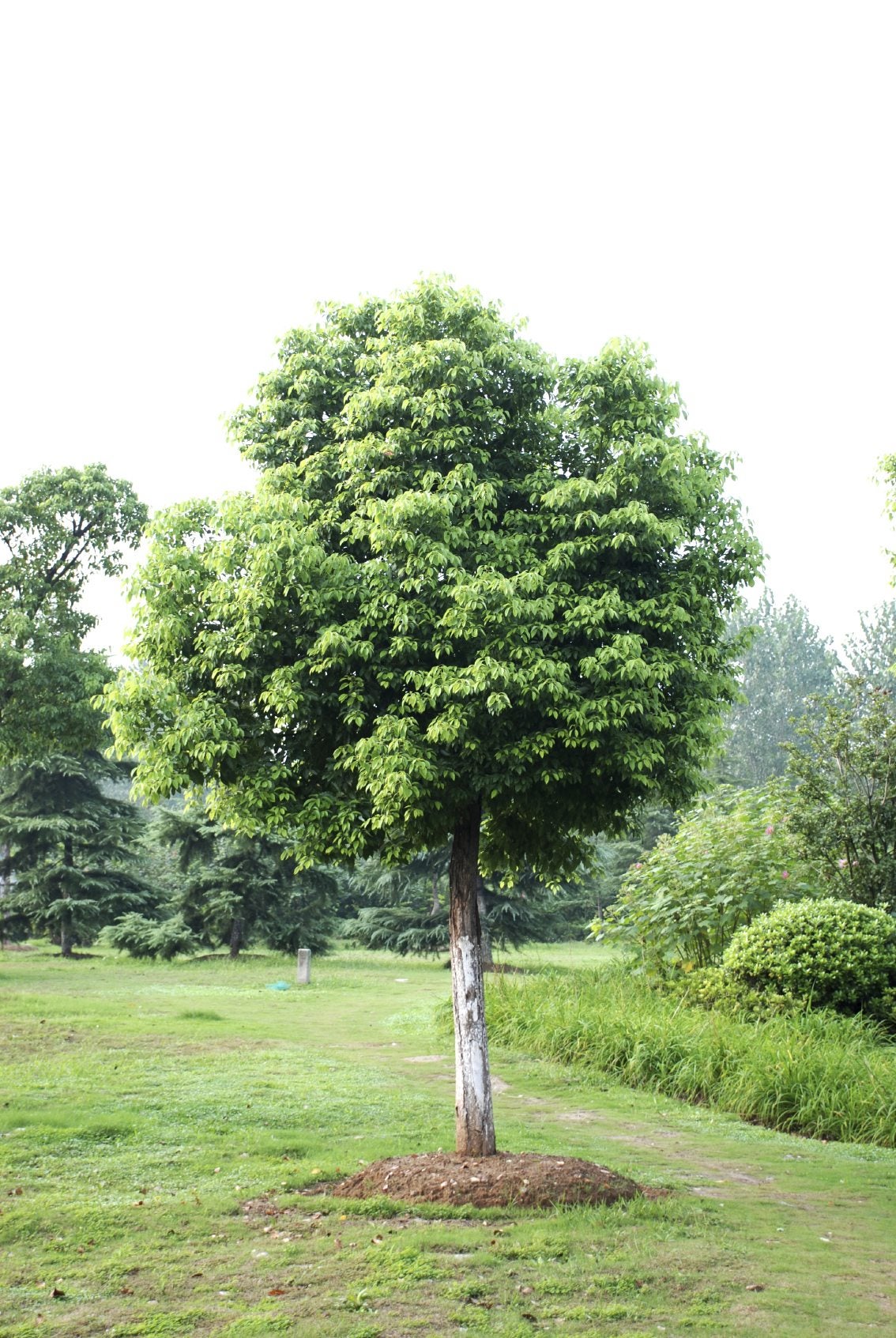Camphor Tree Growing: Camphor Tree Uses In The Landscape


Love it or hate it – few gardeners feel neutral about the camphor tree (Cinnamomum camphora). Camphor trees in the landscape grow very big, very fast, making some homeowners happy and others uncomfortable. The tree also produces thousands of berries that can result in thousands of seedlings in your backyard. Read on for more camphor tree information.
Camphor Tree Information
Camphor trees in the landscape cannot be ignored. Each tree can grow to 150 feet (46 m.) tall and spread twice as wide. Camphor tree information also notes that the trunks get to 15 feet (5 m.) in diameter in some locations, although in the United States, the maximum trunk diameter is much smaller. Camphor trees have glossy oval leaves that dangle from long petioles. Leaves start out a rusty red but soon turn dark green with three yellow veins. The leaves are paler underneath and darker on top. These trees are native to mesic forests of China, Japan, Korea, and Taiwan, but the tree has become naturalized in Australia and thrives in the Gulf and Pacific Coast regions.
Camphor Tree Growing
If you are interested in camphor tree growing, you’ll need some additional camphor tree information. These trees like to grow in fertile sandy soil with a pH level of between 4.3 and 8. Camphor tree growing is best in full sun or partial shade. When caring for camphor trees, you’ll need to water them when they are first transplanted, but once they are established, they are drought tolerant. Don’t plant with the intention of transplanting in mind. When you are caring for camphor trees, you need to know that their roots are very sensitive to disturbance and grow far from the trunk.
Camphor Tree Uses
Camphor tree uses include planting as a shade tree or windbreak. Its long roots make it very resilient to storms and wind. However, other camphor tree uses may surprise you. The tree is grown commercially in China and Japan for its oil that is used for medicinal purposes. Camphor oil has been used to treat conditions from parasitic infections to toothaches, and the plant chemicals have value in antiseptics. Other camphor tree uses involve its attractive red and yellow striped wood. It is good for woodworking and repelling insects. Camphor is also used in perfumes.
Sign up for the Gardening Know How newsletter today and receive a free copy of our e-book "How to Grow Delicious Tomatoes".

Teo Spengler is a master gardener and a docent at the San Francisco Botanical Garden, where she hosts public tours. She has studied horticulture and written about nature, trees, plants, and gardening for more than two decades, following a career as an attorney and legal writer. Her extended family includes some 30 houseplants and hundreds of outdoor plants, including 250 trees, which are her main passion. Spengler currently splits her life between San Francisco and the French Basque Country, though she was raised in Alaska, giving her experience of gardening in a range of climates.